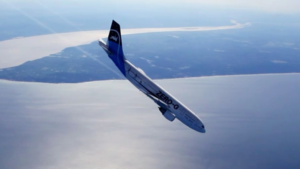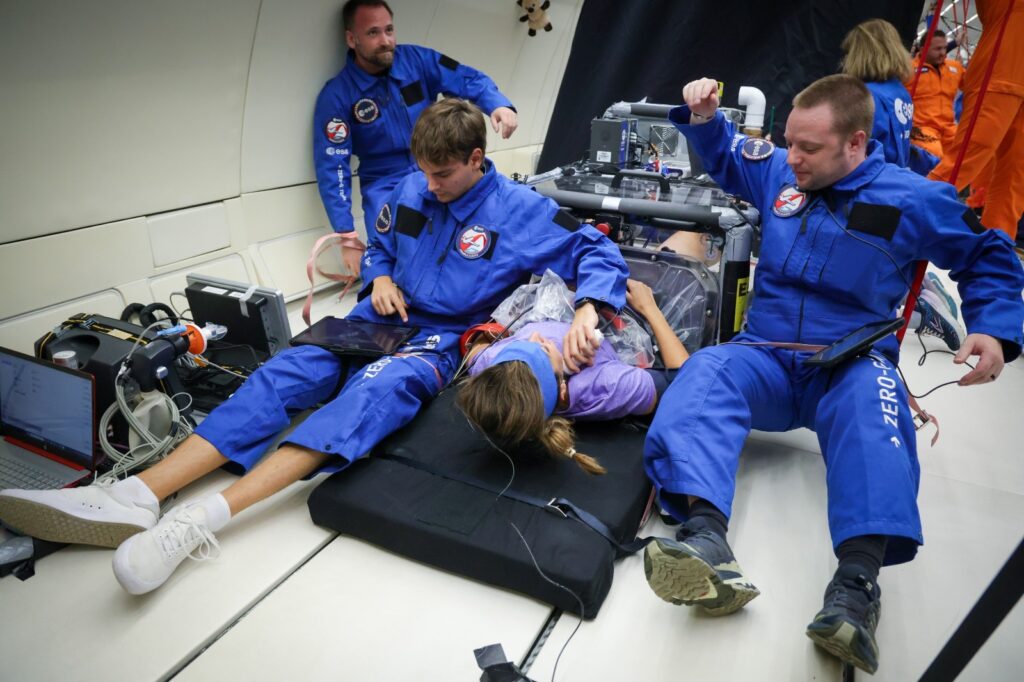
Bimanual Coordination


Led by Dr. Adrien Robin and Dr. Ana Diaz-Artiles and supported by a postdoctoral grand from the Translational Research Institute for Space Health (TRISH), this project examines how graded gravitational stress (from head-down to head-up tilt) shapes cardiovascular and ocular function in healthy adults. In a crossover design, participants (men and women) complete two deconditioning protocols: (1) 48 hours of head-down bed rest and (2) a drug-induced hypovolemia (using diuretic). During each session we systematically vary body angle and continuously measure hemodynamics, fluid transfert, and vascular/ocular indices. Our goal is to define sex-specific dose–response curves to gravity and identify mechanisms of deconditioning. Findings will inform astronaut health risk models and enable individualized countermeasures such as optimized exercise, fluid loading, and compression garments. The work also translates to Earth, supporting better management of syncope, safer perioperative positioning (e.g. Trendelenburg position), and more effective rehabilitation strategies for older or bedridden patients.
In order to investigate physiological responses of centrifugation combined with exercise, we conducted a human experiment on 12 subjects using the MIT short-radius centrifuge. The centrifuge was constrained to a radius of 1.4 meters (the upper radial limit for a centrifuge to fit within an International Space Station (ISS) module without extensive structural alterations), and a cycle ergometer was added for exercise during centrifugation. We tested different levels of artificial gravity (0g, 1g, and 1.4g at the feet in the centripetal direction) and exercise intensity (25W warm-up, 50W moderate, and 100W vigorous) while collecting a variety of data including cardiovascular parameters, foot forces, and subjective comfort and motion sickness data.
Subjects successfully completed the exercise protocol and they tolerated the centrifugation well and motion sickness was minimal. Foot forces measurements indicate that there is a significant effect of both artificial gravity (AG) level and workload intensity on peak forces generated during ergometer exercise. The cardiovascular responses were more prominent (measured as larger deviations from their baseline values) at higher levels of artificial gravity and exercise intensity. In particular, cardiac output, stroke volume, and pulse pressure significantly increased with both AG level and workload intensity, suggesting that the combination of artificial gravity and exercise may be beneficial against cardiovascular deconditioning in space. Mathematical models were fit to these variables across the condition tested. These results suggest that centrifugation combined with exercise may be effective in improving musculoskeletal and cardiovascular functions during long-duration spaceflight. This work was partially supported by Fulbright Commission, the NSBRI (PI: Larry Young), and the MIT/Skoltech Seed grant.
We are conducting studies using tilt platforms combined with cycle ergometer exercise to experimentally determine the impact of simulated hypogravity (including both microgravity and Lunar/Mars conditions) on various physiological parameters. We measure a number of cardiovascular and pulmonary system parameters using a variety of non-invasive equipment, including intraocular pressure with contact tonometers, whilst subjects carry out varying intensity exercise protocols across a range of conditions.
This experiment aims to better understand how the human body responds to graded Lower Body Negative Pressure (LBNP) under true microgravity conditions, provided by parabolic flight. LBNP is a promising countermeasure for the fluid shifts that occur in space, but most studies to date have been conducted on Earth using analogs such as supine or head-down tilt positions. While these approaches remove vertical hydrostatic gradients, they cannot fully replicate the absence of gravitational forces along the front-to-back human axis, which may influence venous return, tissue pressures, and overall cardiovascular regulation.

To address this limitation, our team will investigate cardiovascular, autonomic, and ocular responses to different levels of LBNP during short-duration microgravity phases in parabolic flight. By generating dose-response curves across multiple physiological systems, we aim to directly compare responses in true microgravity with those obtained under 1g analog conditions. The study will also assess sex-based differences in physiological adaptation, contributing to a more inclusive understanding of individual variability in countermeasure effectiveness and fluid regulation during spaceflight.
This project will deliver the most comprehensive and systematic dataset on LBNP responses ever collected in true microgravity. The results will inform the optimization of LBNP as a spaceflight health countermeasure, with direct applications for reducing risks such as Spaceflight-Associated Neuro-ocular Syndrome (SANS) and venous thromboembolism (VTE). Ultimately, the findings will help define the gravitational thresholds needed to maintain cardiovascular and ocular health duringlong-duration missions to the Moon and Mars.